Each year, college strength & conditioning professionals look forward to working with the new class of incoming freshman. We see a wide variety of abilities with incoming freshman ranging from athletes who have never touched a weight in their entire life, to those who came from big high schools with a solid strength and conditioning program. Some have even worked with trainers at a private sports performance facilities before making their way to college athletics.
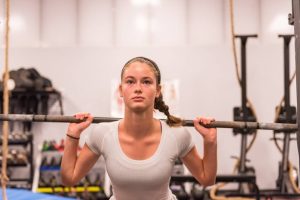 More often than not, we see females who have very little training before getting to college. When they arrive, they quickly realize that they are way behind the upperclassmen and it can have a large impact on their confidence and initial success.
More often than not, we see females who have very little training before getting to college. When they arrive, they quickly realize that they are way behind the upperclassmen and it can have a large impact on their confidence and initial success.
While every college program will be different, this article will explain some of the ways sports performance coaches can help female athletes prepare for their first year in collegiate athletics. Before we begin, let’s take a look at some of the misconceptions young athletes and their parents have about training so we can understand what may have held them back.
Common Misconceptions of Strength Training Before Entering College
- “Being good at my sport is all the work needed to get to the next level” – Coming into collegiate athletics will be a complete reality check for most, preparing a strong and resilient mindset outside of your sport is also important.
- “Training too early won’t help” – Training early can be very beneficial in the reduction of injuries, improving long-term athletic development, and improving performance, as well as having a positive impact on confidence and overall health. Teaching healthy lifestyle habits early on is extremely beneficial.
- “I’m good at my sport and play a lot, so I don’t need extra conditioning” – Training at the collegiate level requires athletes to work hard in many different ways. Coaches may expect you to play a different position or role than you’re used to, and it is up to the strength and conditioning professionals to best prepare you for whatever may be thrown your way in your sport.
- “The weight room at my high school is only for the football players” – Though times are changing, high school weight rooms are highly under-utilized for the majority of their athletes. Not only do many schools offer open hours, but there are also private facilities with performance coaches that offer a wide variety of programs to get you started.
- “I don’t want to get too bulky” – Training for your sport will not get you bulky. Will it increase your lean body mass and body composition? Absolutely. But the majority of the muscle gained will help the athlete better perform in their sport, as well as strengthen the body, musculature surrounding the joints and neuromuscular system to better prevent injuries.
Sports performance coaches may need to addresses these concerns, and it can often be difficult to break through to athletes who have experienced early success. Having the long-term best interest of an athlete in mind can help break down some of these barriers and allow you to explain the importance of training.
What College Coaches Would Like to See
In an effort to understand what they are seeing, I asked several college strength coaches what issues they see in freshmen, and what they’d like to see addressed earlier. Here are a few of their responses:
- “I would like to see more college freshmen coming in the ability to a correct push-up, a pull-up, and a full range of motion bodyweight squat” – Adam Thackery – Washington State University
- “Core stability and low back strength helps athletes brace properly during power movements and maintain an upright torso during sprinting. I believe more work should be done to isolate those specific areas to above all else reduce the risk of injury while also improving performance”– Aaron Potoshnik – Northwestern State University
- “I would like to see student-athletes come in from their freshman year with good shoulder mobility as well as the ability to properly hip hinge. It is also helpful when they come from a program that emphasizes unilateral movement and single-leg type movements, as well as being able to execute proper technique in strength and power movements”– Anthony Glass – Ohio State University
Fortunately, all of these issues can be addressed. Using the experiences of the coaches above, let’s examine how we can help female athletes before they enter college.
Issue #1 – Bodyweight Exercises/Movements
Often found by collegiate coaches, individuals lack the ability to do a proper pull-up, sit up, full ROM bodyweight movements. Implementing these movements into any training program is vital because it shows bodily control and strength.
Pull-ups:
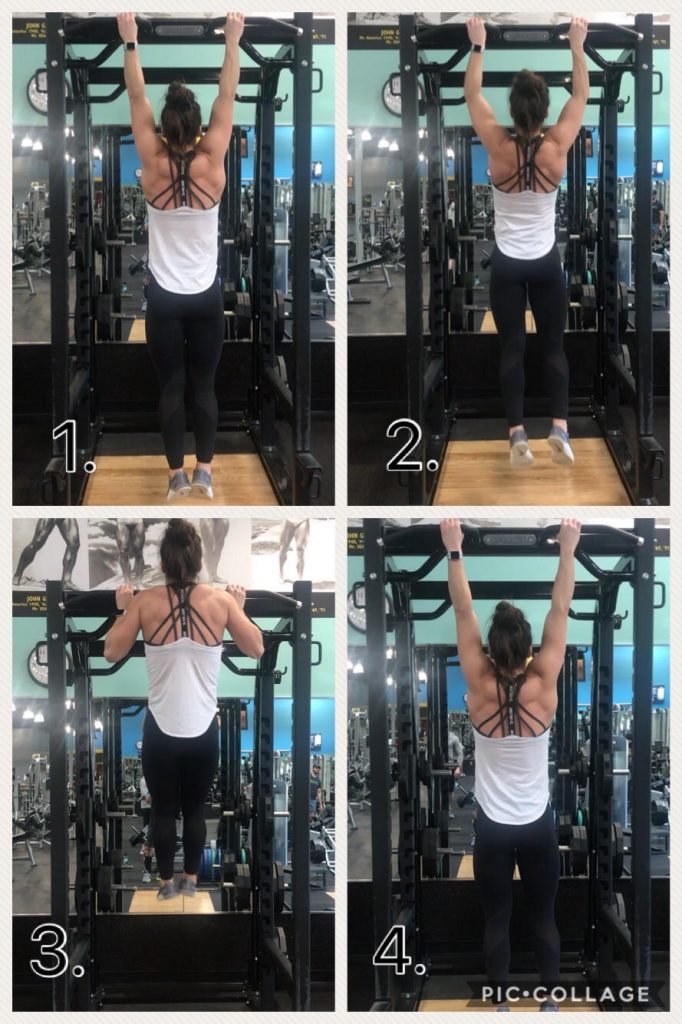
Showing full control of a pull up includes:
-Starting from the relaxed bottom position with a double overhand grip
-Scapular retraction
-Pulling body up until the chin passes over the bar, with a one-second pause at the top
-Eccentric control of the body back to the starting position
Because many young female athletes cannot perform a pull-up, the following methods will help develop the necessary strength:
-Eccentric pull ups through a full range of motion (athlete will jump up, hold, and come down slow and controlled to the very bottom position). Repeat for 3-8 reps depending on their ability to control the motion.
-Banded pull-ups (note: banded pull-ups can limit a full range of motion at the bottom position, so keep an eye on full extension of the arm while completing the pull up with a band)
Push-ups: 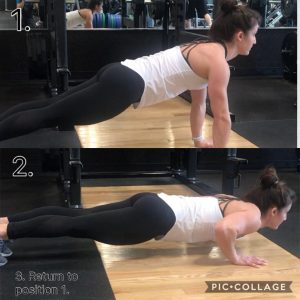
Long gone are the days of the “girl push up.” Push-ups demonstrate core strength as well as upper body strength and control, and this is a simple movement that can be developed in any athlete.
Showing full control of a push-up includes:
-Starting in a proper plank position at the top
-Showing full body control, during the descent, the core stays engaged with body staying in plank position as the arms move
-Arms are at a 45-degree angle to the rib cage
-The body comes down until the angle between the forearm and the humerus is passed 90 degrees
-As the body comes up, the individual must keep the plank position and extend the arms back into the starting position
If an individual is unable to complete a proper push-up, things that can be done instead include:
- Push-ups to an elevated surface (i.e. bench or step)
- Hand-release push-ups
- Eccentric push up to a snake up
Body Weight Squat: 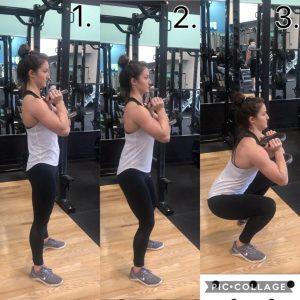
A common problem found in many young athletes is the inability to perform a full-depth body weight squat. Poor ankle mobility will make it very difficult to keep the full foot in contact with the floor. Poor hip mobility will decrease the ability to keep an upright position at the bottom of a squat.
How to execute a proper body weight squat:
-Individual starts standing with feet just outside shoulder width apart, toes pointed slightly out
-Arms at shoulder height or behind head, have the individual squat until the femur is at least parallel to the ground.
-If an individual is unable to complete this, move their feet out wider, change their foot position and try executing a squat passed parallel once again.
-If any deficiencies are found, start implementing different mobility drills to help increase the flexibility and mobility of the desired areas.
*Goblet Squats can be beneficial in helping an individual achieve a proper squat position before moving to a loaded barbell.
*It is important that an individual can complete a proper body weight squat before they can move towards weighted modalities
Issue #2 – No conditioning baseline or any other conditioning outside of energy system used in sport
It is important for athletes to participate in conditioning that is outside of what they are comfortable with. Running miles will only get you so far. Acceleration drills, interval training, threshold training, short and long-distance training are all important aspects of physical development. No matter what sport, from throws to soccer, utilizing different types of training will be beneficial. Teaching different agility and acceleration drills can also be helpful in increasing reaction times on field.
Issue #3 – No weight room experience
Coming into the collegiate setting, many individuals express that they have never even touched a free weight or been inside a gym. Exposing high school athletes to the gym before they reach their college will help acclimate them to the environment. Understanding basic concepts like what sets & reps are or how to push through the discomfort of a hard set will help make the transition to college much easier.
Issue #4 – Range of motion/ sport specialization imbalances and limitations
Almost everyone has a range of motion limitation in one way or another and most never do anything about it unless it causes major problems in their sport. Imbalances and range of motion issues can lead to injuries, so correcting them can prevent future problems. Attacking imbalances early on is a way to advance an athlete in their sport as well as protect them.
 Another category of imbalances is due to right/left dominance. Recognizing these imbalances and creating programs to correct them can help lead to safer athletes on game day.
Another category of imbalances is due to right/left dominance. Recognizing these imbalances and creating programs to correct them can help lead to safer athletes on game day.
Some common range of motion issues occur in the ankle, hip and shoulder joints, as well at throughout the spine. Assess these areas and offer mobility drills to address concerns.
Utilizing dynamic and static stretches, correctives and mobility drills can help an athlete move through various ranges of motion, pre-and post-training, can help an athlete fix their imbalances and achieve full range of motion throughout all planes.
Issue #5 – Basic Exercise Technique (Clean, Squat, Pull, Bench, Lunge etc.):
Most incoming collegiate female athletes have never entered the weight room prior to college, so lack of basic weight room technique is very common. More often than not, there are multiple movements that almost every collegiate strength coach will utilize including the power clean, squat variations, bench press, and lunges. Educating female athletes on these movements will be extremely helpful, not only for injury prevention but to cut the learning curve once they get to school.
Issue #6 – Plyometric Movements
Stabilization of the body and proper landing mechanics in plyometric movements is another area that many female athletes struggle with.
The knee is a great area of concern in female athletes, so early training in jumping and landing mechanics can be extremely beneficial for everyone, but especially female athletes with a higher risk of knee injuries (i.e. ACL, meniscus tears).
Including basic plyometric movements in your female athlete’s program can be extremely helpful in a wide variety of ways.
Plyometric movements that can easily be incorporated are: 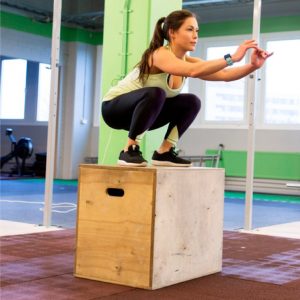
- Vertical jump to stick
- Double leg hop to stick
- Single leg hop to double leg stick
- Bounding
- Lateral hop to stick
- Hurdle jumps- bunny hops, lateral hops, single leg hops, lateral single leg hops, 180 hops
- Box jumps
- Upper body med ball throws/tosses
Issue #7 – Core stability
Core stability and strength are the key to success when it comes to multi-directional movements and proper transfer of force from the ground through the body.
Crunches are not enough. These athletes need anti-rotational and multi-planar exercises to help them correctly transfer and control various forces throughout their bodies.
Anti-rotational exercises and core stabilization exercises can help an athlete learn how to properly brace the core against external resistance. Utilizing exercises like the dead bug, bird dog and leg lowers are beginner movements that teach an athlete to keep the core in a stable position while moving the extremities.
Utilizing structural exercises such as Olympic movements, squats and pulls can help an athlete learn how to properly brace the core when dealing with an external force.
Multi-planar movements are another way to help athletes learn how to stabilize the core while moving, which is much more applicable to sport. Exercises such as med-ball chops, tosses, lunge with twists and combination exercises forces the athlete to stabilize the core while moving in different planes of motion.
How Can We Help?
For female athletes heading into the collegiate sport setting, programming some of these exercises above can help set them apart from the other incoming athletes as they get to college. The areas discussed above are what coaches notice the most and can certainly be addressed by qualified professionals.
For parents and coaches looking to help and prepare their college-bound female athlete research successful local private strength and conditioning facilities- they are not just for football players.
As a sports performance coach, contact the college strength coach to learn more about their strength training expectations for the team or reach out to players on collegiate level teams about expectations of the school. Start implementing some of the training modalities the college coach will be using in an effort to set them up for success once they get to school.
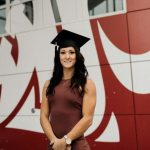 Jordan Tingman- CSCS*, USAW L1, ACE CPT, CFL1 is a graduate of Washington State University with a B.S. in Sports Science with a Minor in Strength and Conditioning. She completed internships with the strength & conditioning programs at both Washington State University and Ohio State University. She is now working as a Graduate Assistant S & C Coach at Eastern Washington University.
Jordan Tingman- CSCS*, USAW L1, ACE CPT, CFL1 is a graduate of Washington State University with a B.S. in Sports Science with a Minor in Strength and Conditioning. She completed internships with the strength & conditioning programs at both Washington State University and Ohio State University. She is now working as a Graduate Assistant S & C Coach at Eastern Washington University.The IYCA High School Strength & Conditioning Specialist certification is the only course available that directly addresses the needs of the high school athlete. Learn more about the HSSCS HERE:


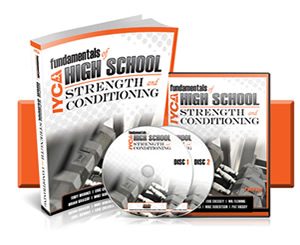
BAM! What a great article!